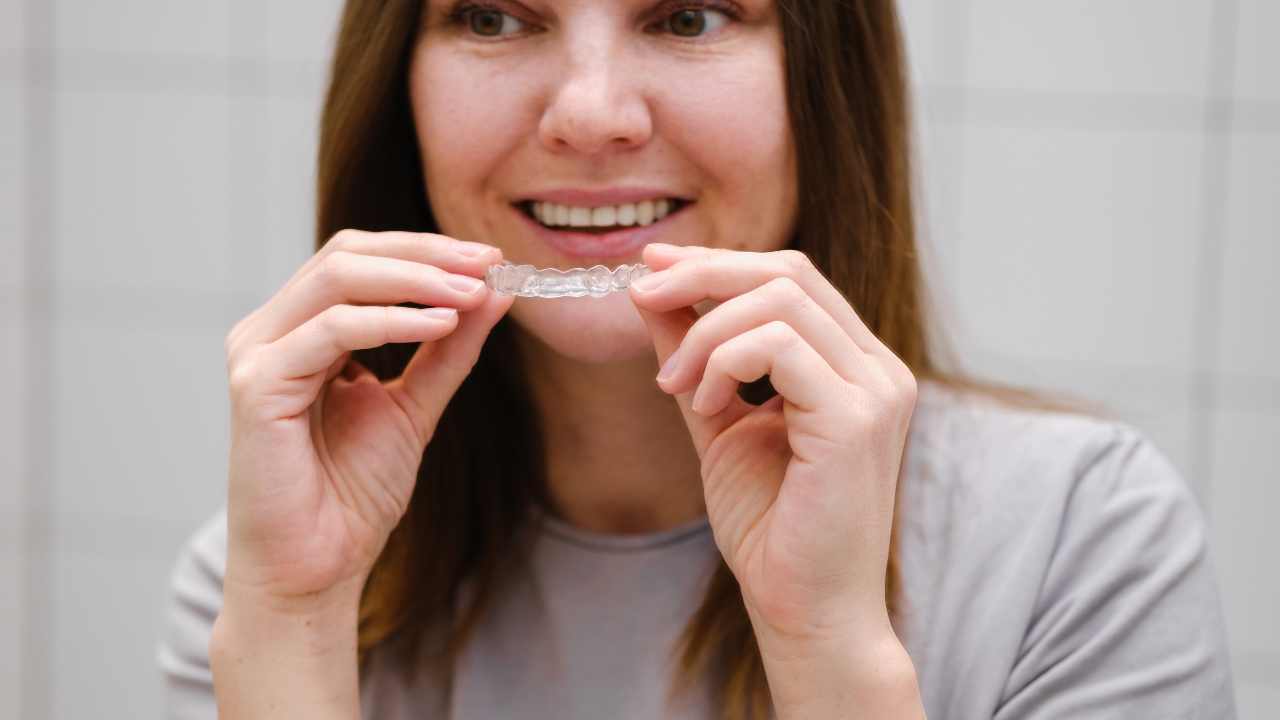Achieving a Perfect Smile with Invisalign
Achieving a Perfect Smile with Invisalign

In today’s world, a perfect smile is not just a cosmetic desire but also a sign of good oral health. Traditional metal braces have long been the go-to solution for straightening teeth, but with advancements in dental technology, Invisalign has emerged as a popular alternative. In this article, we will delve into the details of achieving a perfect smile with Invisalign, exploring its benefits, process, experiences, and more.
Introduction to Invisalign
Invisalign is a modern orthodontic treatment that uses clear, removable aligners to straighten teeth gradually. Unlike traditional braces, which involve metal brackets and wires, Invisalign aligners are nearly invisible, offering a discreet way to correct dental misalignments.
Benefits of Invisalign over Traditional Braces
One of the key advantages of Invisalign is its aesthetic appeal. The clear aligners blend seamlessly with the natural teeth, making them virtually undetectable. This makes Invisalign particularly popular among adults and teens who may feel self-conscious about wearing traditional braces.
How Invisalign Works
Customized Treatment Plan
Before starting Invisalign treatment, a dentist or orthodontist creates a customized plan based on the patient’s dental needs. This involves digital scans and 3D imaging to design a series of aligners that will gradually move the teeth into the desired positions.
Transparent Aligners
The aligners are made from a clear, flexible plastic material, making them comfortable to wear and almost invisible to others. Patients typically wear each set of aligners for about two weeks before switching to the next set in the series.
Progress Monitoring
Throughout the treatment process, patients visit their dental provider periodically to ensure that the aligners are working effectively. Adjustments may be made to the treatment plan as needed to achieve the desired results.
Candidates for Invisalign Treatment
Invisalign is suitable for a wide range of dental issues, including crooked teeth, overcrowding, gaps between teeth, and bite irregularities. However, not everyone is a candidate for Invisalign treatment.
Age Considerations
While Invisalign can be used for both teens and adults, it may not be recommended for young children whose teeth and jaws are still developing. The best candidates are individuals with fully erupted permanent teeth.
Dental Issues Suitable for Invisalign
Invisalign is effective for treating mild to moderate orthodontic problems. Severe cases may require alternative treatments such as traditional braces or surgical intervention.
The Process of Getting Invisalign
Initial Consultation
The first step in getting Invisalign is a consultation with a qualified dental provider. During this visit, the dentist will assess the patient’s oral health, discuss treatment goals, and determine if Invisalign is the right option.
Digital Scanning and Treatment Plan Design
If Invisalign is deemed suitable, digital scans and impressions of the teeth are taken to create a customized treatment plan. This plan outlines the gradual movement of the teeth and the expected duration of treatment.
Aligner Fitting and Start of Treatment
Once the aligners are ready, the patient returns to the dental office for a fitting. The aligners are worn for 20-22 hours a day, only removed for eating, drinking, brushing, and flossing. Patients switch to a new set of aligners every few weeks as directed by their dentist.
Invisalign Treatment Experience
Comfort and Convenience
One of the main benefits of Invisalign is its comfort compared to traditional braces. The smooth aligners are less likely to irritate the cheeks and gums, providing a more comfortable wearing experience.
Eating and Oral Hygiene
Unlike braces, which require dietary restrictions and intricate cleaning routines, Invisalign allows patients to eat their favorite foods without restrictions. Additionally, maintaining oral hygiene is easier since the aligners can be removed for brushing and flossing.
Lifestyle Impact
Invisalign aligners fit seamlessly into the patient’s lifestyle, allowing them to continue their daily activities without interruption. The discreet nature of the aligners also minimizes the impact on social interactions and professional engagements.
Comparing Costs: Invisalign vs. Traditional Braces
The cost of Invisalign treatment varies depending on the complexity of the case and the duration of treatment. While Invisalign may have a higher initial cost than traditional braces, many patients find the benefits, comfort, and aesthetics well worth the investment.
Success Stories and Testimonials
Countless individuals have achieved beautiful, straight smiles with Invisalign. Success stories and testimonials from satisfied patients highlight the effectiveness and life-changing impact of this innovative orthodontic treatment.
Potential Side Effects and How to Manage Them
Like any dental procedure, Invisalign may have potential side effects such as temporary discomfort, speech changes, or minor adjustments in eating habits. These effects are usually mild and can be managed with guidance from the dental provider.
Maintaining Results Post-Invisalign
After completing Invisalign treatment, patients are often provided with retainers to maintain the results and prevent teeth from shifting back to their original positions. Regular dental check-ups are also recommended to ensure long-term oral health.
Conclusion
Invisalign offers a modern, convenient, and effective solution for achieving a perfect smile. Its discreet appearance, comfortable fit, and ability to address various dental issues make it a popular choice among individuals seeking orthodontic treatment.








